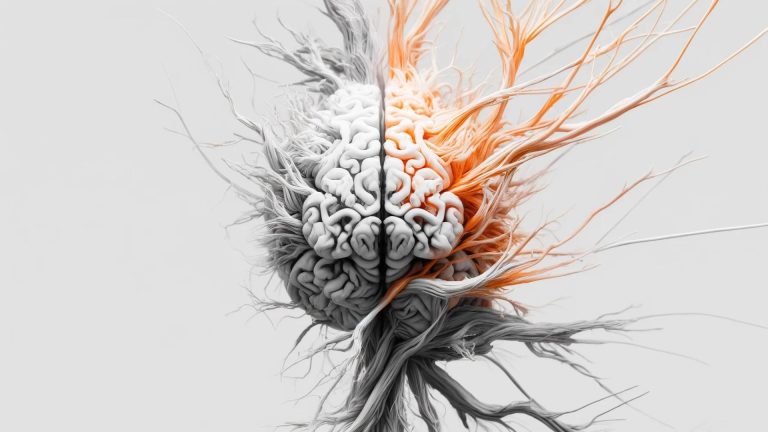Introduction to Decision Fatigue
Ever felt mentally exhausted from making countless decisions throughout the day? That’s decision fatigue in action. As our brains process numerous choices, our ability to make well-thought-out decisions diminishes. Imagine a life where you minimize this fatigue and make better choices effortlessly. Intrigued? Let’s explore how harnessing the power of habits can help defeat decision fatigue and streamline your daily life.
Decision fatigue occurs when we make too many decisions in a short period, leading to decreased decision-making quality. This phenomenon affects everyone, from busy professionals to overwhelmed parents. The result? Poor choices, procrastination, and stress. Understanding decision fatigue is crucial for finding ways to combat it and maintain mental clarity throughout the day.
One effective strategy to combat decision fatigue is by establishing habits. Habits automate routine actions, reducing the number of decisions you need to make. By turning repetitive tasks into habits, you conserve mental energy for more important decisions. Let’s delve into how you can leverage habits to reduce decision fatigue and enhance your productivity and well-being.
Table of Content
- Introduction to Decision Fatigue
- The Role of Habits in Reducing Fatigue
- Identifying Decision Fatigue Triggers
- Building Habits to Combat Fatigue
- Creating a Simplified Routine
- Maintaining Mental Clarity
- Conclusion: Enhancing Efficiency with Habits
- FAQs on Decision Fatigue and Habits
The Role of Habits in Reducing Fatigue
How Habits Minimize Decision-Making
Habits play a crucial role in minimizing decision-making by automating routine tasks. When actions become habitual, they require little to no conscious thought, freeing up mental energy for more important decisions. For instance, brushing your teeth every morning is likely an automatic process, allowing you to focus on more complex tasks. This automation reduces the cognitive load on your brain, making your day less mentally exhausting.
In my opinion, creating habits around daily activities can significantly reduce decision fatigue. Establishing routines for tasks such as meal planning, exercise, and work schedules can streamline your day. When these tasks become habits, you don’t need to deliberate on them, saving mental resources for critical thinking and problem-solving. The more you automate through habits, the less decision fatigue you experience.
Examples of Habits That Streamline Routines
Certain habits are particularly effective at streamlining routines and reducing decision fatigue. For example, setting a consistent wake-up time and morning routine can ensure you start your day on autopilot, without needing to decide what to do first. Similarly, preparing meals in advance or following a weekly meal plan eliminates the daily decision-making about what to eat.
Another effective habit is to establish a regular exercise routine. Knowing exactly when and how you’ll exercise each day removes the need to decide on the spot, making it easier to stick to your fitness goals. Additionally, organizing your work tasks with a prioritized to-do list can help you transition smoothly from one task to another, reducing the need for constant decision-making about what to do next. These habits create a structured, predictable day, minimizing mental fatigue.

Identifying Decision Fatigue Triggers
Common Sources of Decision Fatigue
Common sources of decision fatigue include making numerous small decisions throughout the day, such as what to wear, what to eat, and how to prioritize tasks. Each choice, no matter how minor, requires mental energy. Over time, these small decisions add up, leading to significant cognitive depletion. High-stakes decisions or frequent interruptions can also contribute to decision fatigue, overwhelming your brain with constant choices and disruptions.
Work environments that demand rapid, consecutive decision-making, like those of managers or customer service representatives, are particularly prone to causing decision fatigue. Similarly, personal responsibilities, such as parenting, can involve a continuous stream of decisions, further exacerbating fatigue. Recognizing these sources can help you take proactive steps to reduce their impact on your mental energy.
How to Recognize When You Are Experiencing It
Recognizing decision fatigue is crucial for addressing it effectively. Symptoms include feeling overwhelmed, experiencing difficulty making decisions, and a tendency to procrastinate. You might also notice a decline in the quality of your decisions as the day progresses, opting for easier, less optimal choices. Physical symptoms such as headaches or irritability can also indicate mental exhaustion from too many decisions.
In my opinion, self-awareness is key to identifying decision fatigue. Pay attention to your decision-making patterns and how you feel after a series of choices. If you find yourself consistently drained or making poor decisions later in the day, it’s a sign you might be experiencing decision fatigue. Acknowledging this allows you to implement strategies, such as establishing habits and routines, to mitigate its effects and maintain better decision-making capabilities throughout the day.
Related Article: The Exhausting Truth: Unveiling Decision Fatigue
Building Habits to Combat Fatigue
Effective Habits to Reduce Mental Load
Developing effective habits is key to reducing mental load and combating decision fatigue. Simple habits like planning your day the night before can make mornings more efficient and less stressful. Meal prepping on weekends ensures that you don’t have to decide what to eat every day. Regular exercise, even if it’s a short walk, can boost your mental clarity and energy levels, further reducing fatigue.
In my opinion, digital habits such as checking emails at designated times rather than continuously can help manage mental overload. Similarly, automating bills and using calendar reminders for tasks and appointments can free up significant cognitive resources. These habits create a structured environment, allowing you to focus on more important decisions and tasks, thereby reducing overall mental strain.
Strategies to Implement These Habits
Implementing new habits requires a strategic approach. Start by identifying key areas in your life where decision fatigue is most prevalent, and choose simple, manageable habits that can address these issues. For example, if mornings are chaotic, create a habit of laying out your clothes and preparing your breakfast the night before. This pre-planning reduces morning decision-making.
Use tools such as habit trackers and reminders to stay consistent with your new habits. Begin with small, achievable changes and gradually build up to more complex habits. Reward yourself for sticking to your routines, reinforcing the behavior. Over time, these habits will become automatic, significantly reducing the mental load and helping you maintain better focus and energy throughout the day.

Creating a Simplified Routine
Designing a Routine That Limits Decisions
Designing a simplified routine that limits decisions can greatly alleviate decision fatigue. Start by analyzing your daily activities and identifying repetitive tasks that can be automated or streamlined. Create a fixed schedule for essential activities like meals, exercise, and work tasks. This structured approach reduces the need for constant decision-making, allowing you to conserve mental energy.
Incorporate time blocks into your routine for specific activities, such as dedicated work periods, relaxation time, and social interactions. This not only helps in managing your time efficiently but also ensures that you have a balanced day with time for all necessary activities. By minimizing the number of decisions you make daily, you can focus better on important tasks and reduce overall mental fatigue.
Importance of Consistency in Routines
Consistency is crucial when it comes to routines. A consistent routine helps your brain anticipate and automate tasks, making your day run more smoothly. When your brain recognizes patterns, it reduces the cognitive load associated with decision-making, leading to less fatigue. Consistency also helps in building and reinforcing habits, making them a natural part of your daily life.
In my opinion, maintaining consistency in routines also provides a sense of stability and control. This predictability can reduce stress and anxiety, as you know what to expect throughout the day. Consistent routines foster a more organized and productive environment, allowing you to allocate your mental resources more effectively. Over time, this can lead to improved performance and well-being.
Maintaining Mental Clarity
Techniques to Sustain Mental Energy
Sustaining mental energy is essential for combating decision fatigue and maintaining clarity throughout the day. One effective technique is to take regular breaks, allowing your brain to rest and recharge. The Pomodoro Technique, which involves working for 25 minutes and then taking a 5-minute break, can help maintain focus and energy levels. Staying hydrated and eating nutritious meals also play a crucial role in sustaining mental energy.
In my opinion, incorporating mindfulness practices such as meditation or deep breathing exercises into your daily routine can significantly enhance mental clarity. These practices help reduce stress and improve focus, enabling you to manage your cognitive load better. Additionally, ensuring adequate sleep is vital for cognitive function, as it allows your brain to recover and prepare for the next day’s decisions.
How to Periodically Refresh Your Routine
Periodically refreshing your routine is important to avoid monotony and maintain motivation. Evaluate your current routine regularly and identify areas that might need adjustment. Introducing small changes, like varying your workout or trying new hobbies, can keep your routine engaging and prevent burnout. This variety helps sustain your interest and commitment to your habits.
Seasonal changes or life transitions can also prompt a reevaluation of your routine. For instance, adjusting your schedule to accommodate different daylight hours or new work responsibilities can keep your routine relevant and effective. By staying flexible and open to change, you can ensure that your routine continues to meet your needs and support your mental clarity and energy levels.

Conclusion: Enhancing Efficiency with Habits
Defeating decision fatigue through the power of habits is a transformative strategy that can enhance your efficiency and well-being. By automating routine tasks, you free up mental energy for more important decisions, reducing overall cognitive load. Establishing effective habits not only simplifies your daily life but also promotes consistency and productivity, creating a stable foundation for personal and professional success.
In my opinion, integrating habits that combat decision fatigue requires thoughtful planning and persistence. Start with small, manageable changes, and gradually build a routine that supports your goals. Consistency is key, and over time, these habits will become second nature, further reducing the mental effort required to navigate daily tasks. Regularly reassess and adjust your routines to keep them relevant and effective.
In conclusion, harnessing the power of habits to defeat decision fatigue is an invaluable approach to achieving a balanced and efficient lifestyle. By understanding the triggers of decision fatigue and implementing strategies to mitigate its effects, you can maintain mental clarity and sustain energy throughout the day. Embrace the journey of habit formation, and watch as your daily life transforms, allowing you to focus on what truly matters.
FAQs Section
What is decision fatigue and how does it affect me?
Decision fatigue occurs when you become mentally exhausted from making too many decisions, leading to poorer choices and decreased productivity. This mental exhaustion can result in procrastination, stress, and impulsive decisions, negatively impacting both personal and professional aspects of your life.
How can habits help reduce decision fatigue?
Habits reduce decision fatigue by automating routine tasks, freeing up mental energy for more critical decisions. When actions become habitual, they require less cognitive effort, allowing you to focus better on important tasks and reduce overall mental strain throughout the day.
What are some common signs of decision fatigue?
Common signs of decision fatigue include feeling overwhelmed, increased procrastination, difficulty making decisions, and decreased quality of choices as the day progresses. Physical symptoms like headaches and irritability can also indicate mental exhaustion from too many decisions.
What are effective habits to combat decision fatigue?
Effective habits to combat decision fatigue include planning your day the night before, meal prepping, setting a consistent morning routine, and limiting daily decisions through pre-made choices. These habits streamline your routine and reduce the number of decisions you need to make daily.
How can I create a simplified routine to minimize decision fatigue?
To create a simplified routine, identify repetitive tasks and automate or streamline them. Establish fixed schedules for essential activities like meals and exercise. Consistency and structure reduce the need for constant decision-making, conserving mental energy for more important tasks.
